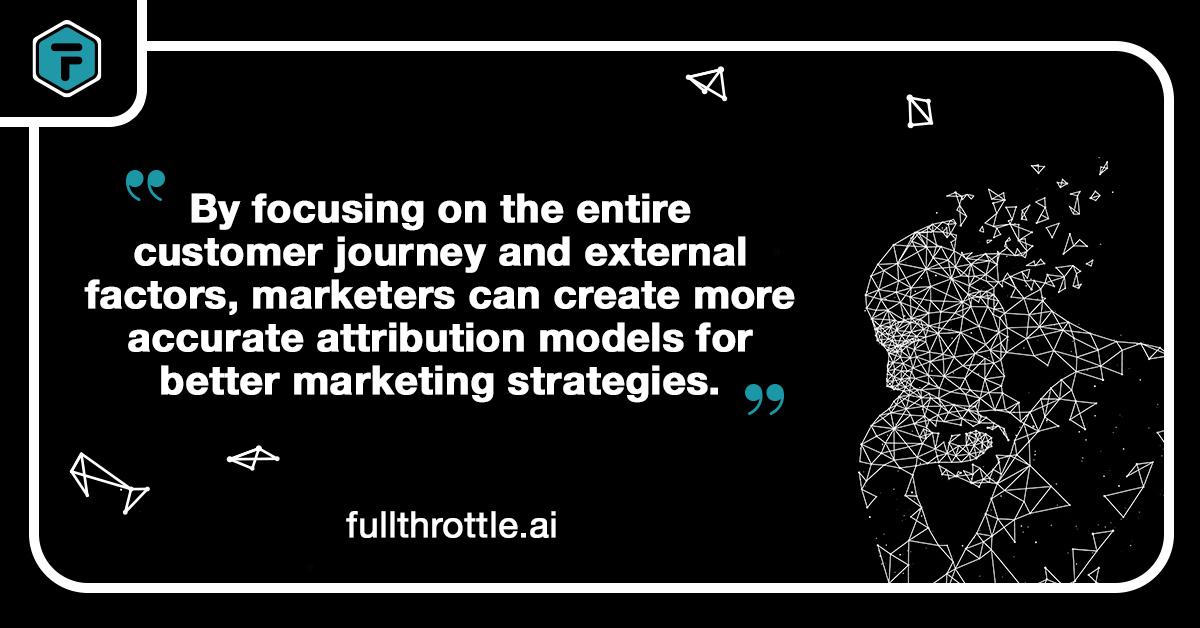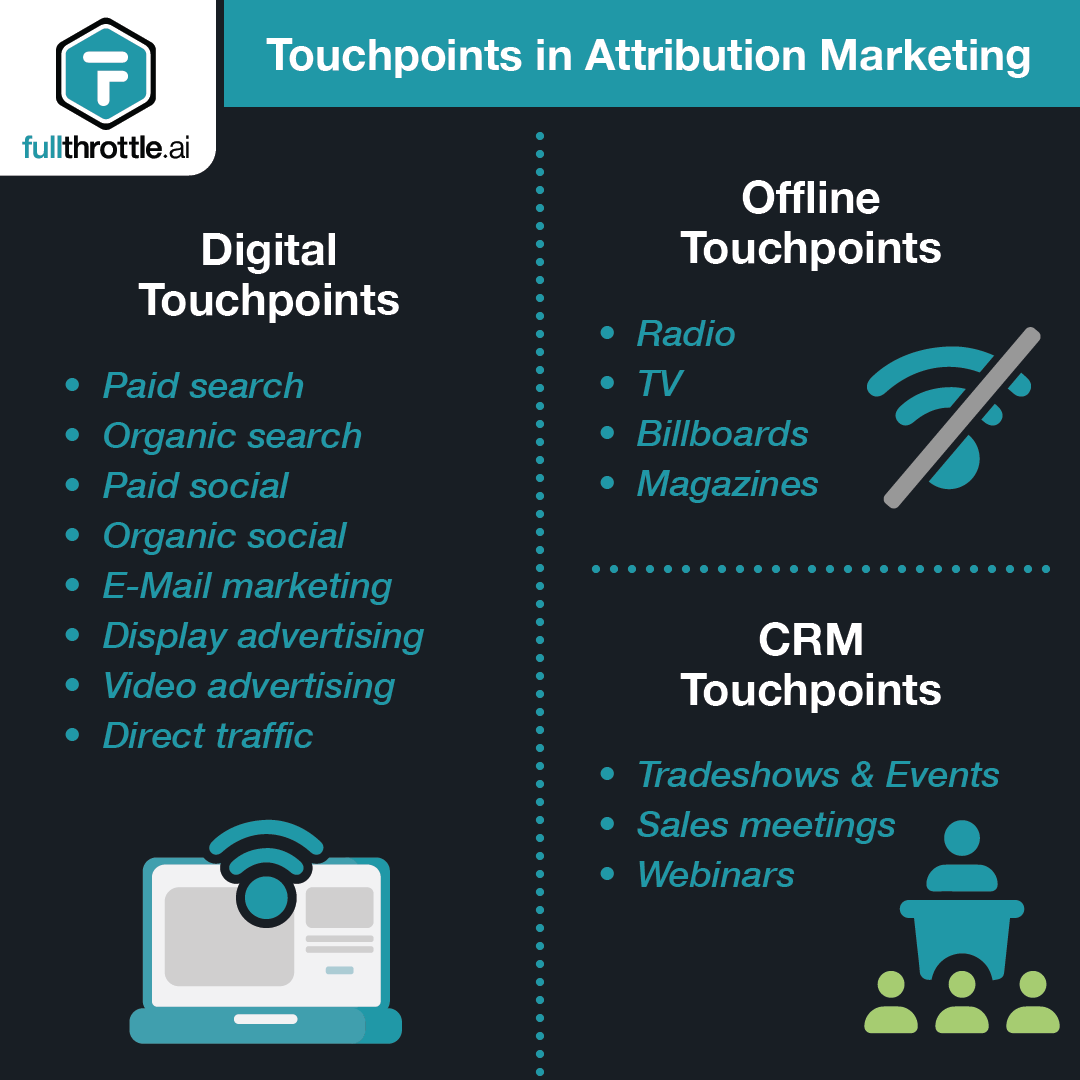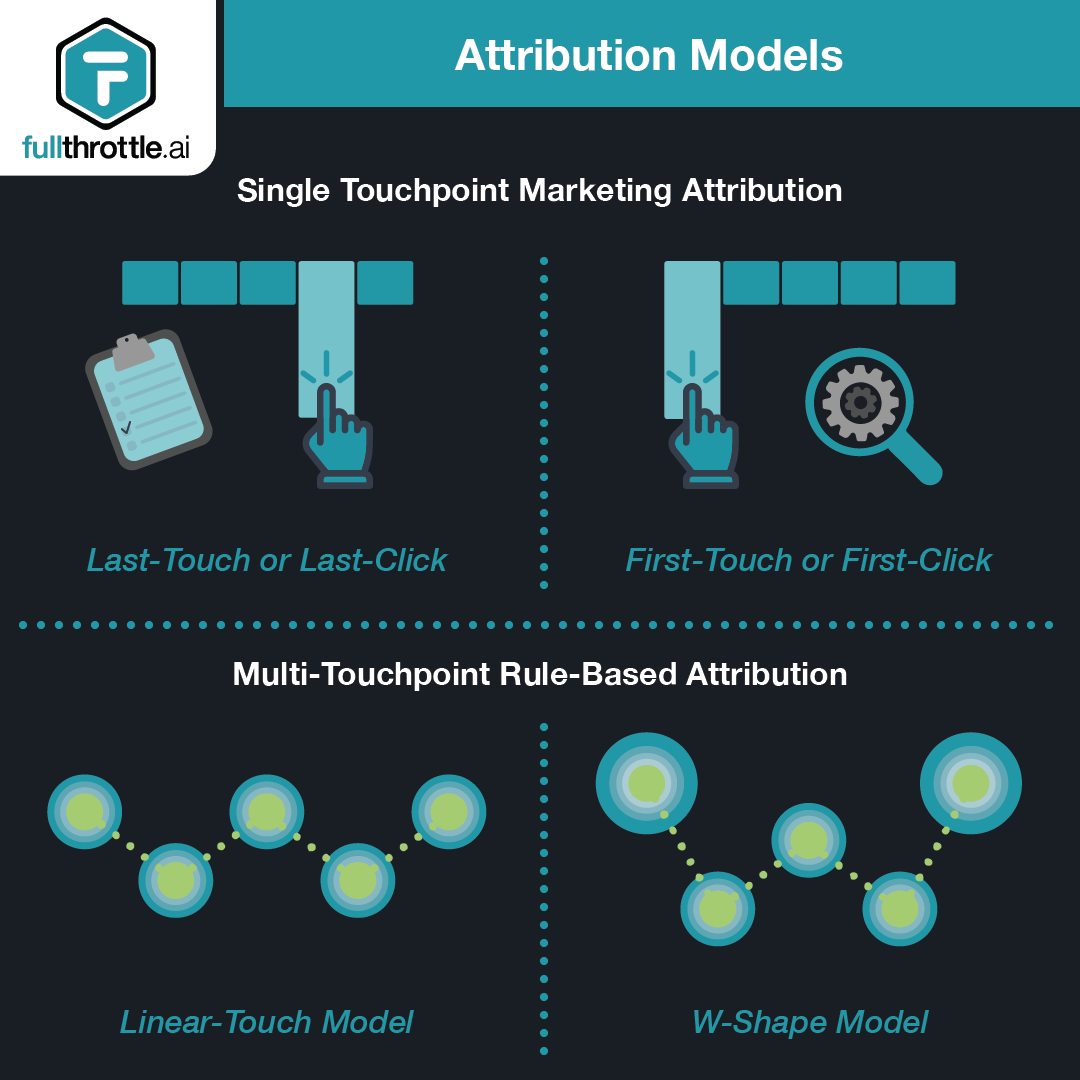
by: Pete Kelso
Embracing a Holistic Approach for Enhanced Marketing Success
Traditional digital marketing attribution models often leave marketers wanting more, as they fail to capture the essence of the customer journey. It’s time to move beyond the limitations of the zero-sum attribution theory and explore innovative approaches that prioritize the intricate nature of the customer journey, valuing quality over quantity.
Top takeaways:
- Marketers should prioritize quality over quantity in their attribution models.
- A comprehensive approach to touchpoints and brand messaging leads to more effective marketing campaigns and increased customer satisfaction.
- Incorporating external factors, such as marketplace, competition, and environment, results in more accurate attribution models.
- Collaboration between marketing teams is crucial for optimizing performance and understanding the customer journey.
- Innovative solutions, like fullthrottle.aiTM, enable marketers to harness first-party data for more effective digital marketing attribution.
What Is Marketing Attribution?
The process of attributing a sale or a conversion to the various touchpoints and interactions a customer has with your brand is known as marketing attribution. It's a mystery that many marketers are trying to solve. Figuring out which marketing tactics were responsible for your biggest sales is similar to a puzzle that changes the moment you feel like you’re getting close to a solution.
How do we get to the bottom of what's really driving your conversions? Instead of focusing on the individual touchpoints, shift your focus to the customer journey. Think of it as trying to determine which drink caused a hangover—it’s about understanding the behaviors and the interactions that led to the result. By taking a step back and examining the bigger picture, you can gain a deeper understanding of what's driving your conversions and make data-driven decisions on where to allocate your resources for maximum impact.

Types of Attribution Models
Understanding the various types of attribution models is crucial for marketers to optimize their campaigns and allocate resources effectively. In this section, we will discuss four main categories of attribution models: single touchpoint models, multi-touchpoint rule-based models, algorithmic or data-driven models, and econometric models.
Single Touchpoint Models
Single touchpoint models assign full credit to one specific interaction in the customer journey, such as the first or the last touchpoint. This simplifies the attribution process but often overlooks the impact of other touchpoints that contribute to the conversion. For instance, if a customer engages with a PPC ad before making a purchase, the ad might receive all the credit, while ignoring the sales landing page the customer spent days considering.
Multi-Touchpoint Rule-Based Models
Multi-touchpoint rule-based models distribute credit among various touchpoints in the customer journey according to predefined rules. While this approach considers multiple interactions, it can create a zero-sum game dilemma, where one touchpoint's gain results in another's loss. This may lead to a focus on quantity over quality and hinder collaboration, as marketing teams might compete against each other instead of working together to enhance the customer journey.
Algorithmic/Data-Driven Models
Algorithmic or data-driven models use machine learning and statistical techniques to analyze the impact of each touchpoint in the conversion process. They identify patterns and assign credit more accurately than rule-based models, optimizing campaigns based on data-driven insights.
However, these models can be complex to implement, require significant investments in technology and skilled data analysts, and are highly dependent on the quality and quantity of available data. Inaccurate or inconclusive results can occur with poor data quality or insufficient data points.
Econometric Models
Econometric models, or marketing mix models, use advanced statistical methods to measure the effectiveness of various marketing channels and tactics, considering external factors like seasonality and competitor activities. They help marketers make data-driven decisions and allocate resources effectively.
Despite their benefits, they require a high level of expertise in statistical analysis and may be time-consuming to develop and maintain. Additionally, they may not fully capture the nuances of individual customer journeys or the specific contributions of various touchpoints, leading to an incomplete understanding of the customer experience and potentially suboptimal marketing decisions.

The Impact on Evaluators
Zero-sum attribution can also breed cynicism among those assessing marketing performance. Tasked with identifying and removing underperforming vendors, evaluators may develop a "hero complex," targeting perceived underachievers rather than considering the broader context of the customer journey. That kind of mindset can lead to missed opportunities, as evaluators may overlook the potential synergy between different touchpoints in the overall customer experience.
A Fresh Perspective: The Positive Sum Theory
The "positive sum theory" offers an alternative to the zero-sum game, focusing on the cost per acquisition for media buys. By adopting this mindset, marketers can concentrate on the quality of customer touchpoints rather than their mere quantity. The objective is to understand the value of each touchpoint in the shopping process and evaluate whether it's worth the investment. This approach fosters a more nuanced understanding of the customer journey and encourages collaboration between marketing teams to optimize performance.
For instance, imagine an online clothing store utilizing multiple touchpoints, including paid search, social media advertising, and email marketing, to reach potential customers. The positive sum theory encourages marketers to analyze the cost per acquisition for each of these touchpoints. By doing so, they can identify which channels yield the highest quality leads and conversions, while optimizing their marketing budget.
For example, if paid search yields a lower cost per acquisition and more engaged customers compared to social media advertising, marketers can allocate more budget towards paid search to maximize their return on investment. This approach fosters a more nuanced understanding of the customer journey and encourages collaboration between marketing teams to optimize performance.
A Comprehensive Approach to Touchpoints and Brand Messaging
To improve their attribution models, marketers should view the customer journey as a whole, instead of solely focusing on credit and loss allocation. Last-touch or Single-touch attribution models often overlook the customer journey's progression, which encompasses multiple touchpoints contributing to overall immersion and brand messaging. By expanding their perspective, marketers can better understand the customer experience and make more informed decisions about their marketing strategies. This holistic view can lead to more effective marketing campaigns and increased customer satisfaction.
Incorporating External Factors in Attribution Models
When developing holistic attribution models, marketers should also take into account external factors. The marketplace, competition, and general environment can all significantly impact marketing performance. Unfortunately, most current attribution models neglect these essential elements, resulting in incomplete or deceptive evaluations of marketing effectiveness. By considering these external factors, marketers can create more accurate attribution models that better reflect the true impact of their marketing efforts on customer behavior.
fullthrottle.aiTM: Revolutionizing Cookieless Digital Marketing With First-Party Data
Leveraging innovative solutions like fullthrottle.aiTM, which allows you to build valuable first-party data, can help you make smart decisions and implement effective post-cookie strategies. fullthrottle.aiTM gives you unprecedented insights into attribution and the customer journey. Since each touchpoint is tied back to real business transactions, you’ll see how each message and channel influenced a buyer before they completed their purchase.
fullthrottle.aiTM gives you full transparency into channel performance (even social media) to show you exactly what drove each individual sale. Armed with that data, you can create more effective future campaigns and improve marketing ROI across your business. To see our technology in action, schedule a demo.



